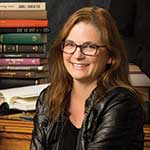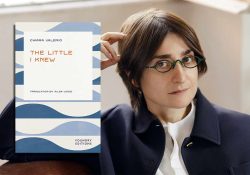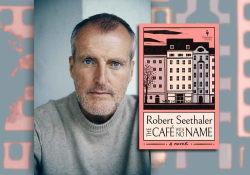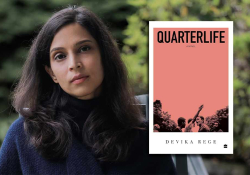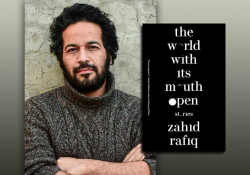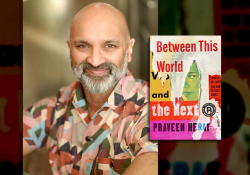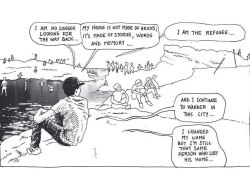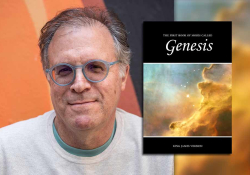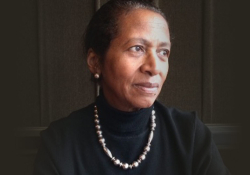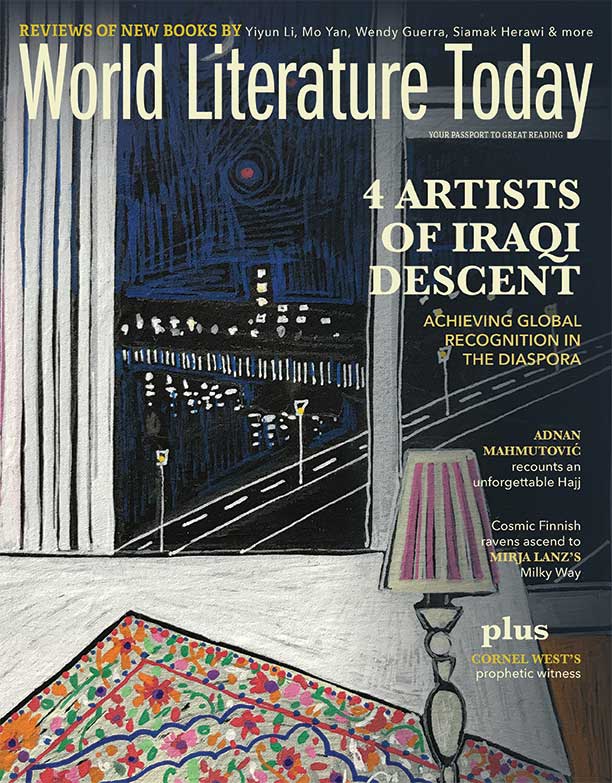7 Questions for Jazmina Barrera
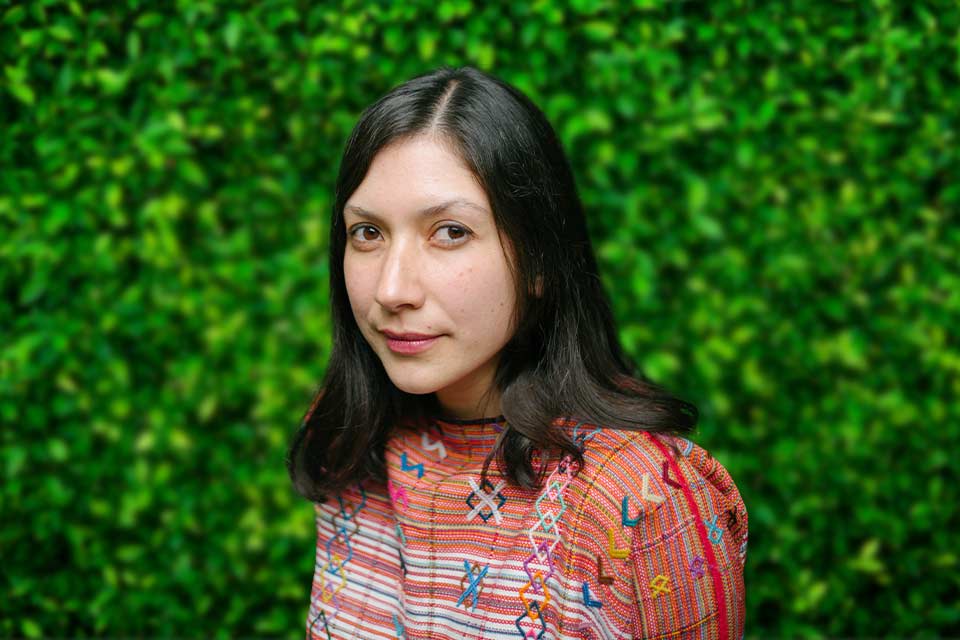
Jazmina Barrera’s first novel, Cross-Stitch, translated by Christina MacSweeney, is an engrossing story of three friends as they come of age in Mexico City and while traveling together in London and Paris. Their interests in literature, art, and, especially, embroidery bind them together. Toggling between the story of the friends and fragments about the history of needlework, Cross-Stitch is an engrossing story bound together by a brilliant use of theme.
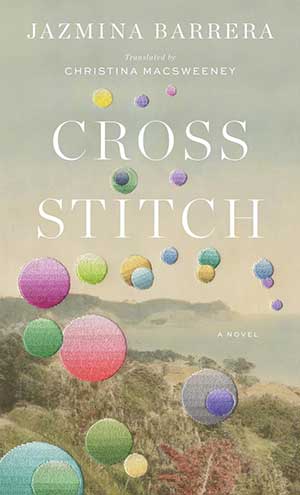 Q
Q
Mila, the narrator of Cross-Stitch, learned to read and write when she learned to cross-stitch. Embroidery works thematically throughout the novel, running through both the story of the three friends and the alternating fragments about embroidery, which often give insight into the history of embroidery as art and protest—even as a coded means of communication. What’s one of your favorite stories about embroidery from the wealth of research you’ve done?
A
It’s hard to choose! I love the story of the Chilean arpilleras, pieces of fabric on which women embroidered heartbreaking stories of violence during Pinochet’s dictatorship. Since embroidery seemed such an innocent task, they managed to get away with this form of social protest for a while. And because the fabrics were so easy to hide and carry, they could be taken to foreign countries to display Pinochet’s atrocities to the world. Plus, they are just beautiful and moving pieces of art and great examples of the part that textiles have played in the preservation of collective memory.
Q
Mila says that she would never take advice from a how-to book on writing but that a novel could be written based on the instructions in a needlework manual. What’s the best needlework advice for writers?
A
I especially like the one I quote in the book, “let the fabric breathe.” I believe books shouldn’t be hurried. It’s best to let them breathe for a while before going back to them, even before deciding they’re ready.
Q
What is your own experience with needlework?
A
My history with needlework is very similar to the narrator’s. My grandmother taught me cross-stitch, and then I perfected that knowledge with my computer studies teacher when I was eleven years old. When I was fifteen, I went to an Otomí town in Querétaro to teach adults to read and write, and the women I met there taught me different techniques. It was there that my group of friends and I started to embroider regularly.
Q
As a child, Mila, our narrator, was an avid reader: she had a fanatical love of Angela Carter and would memorize whole passages of Great Expectations. What kind of reader were you as a child? What kind of reader are you now?
A
There again, my reading habits were very similar to Mila’s. I used to read every night with my mother until I was about ten years old. Then I started reading a lot of fantasy and nineteenth-century novels, such as Great Expectations. I found that the anglophone literary canon back then was more open to speculative genres and included more women writers (things have changed for Hispanic literature, fortunately). I was very into gothic literature, and that’s why Carter was such a discovery for me. I still love her; I find her humor charming and her prose very musical and poetic.
I would say I’m a very eclectic reader. I like to jump around between different traditions, genres, and epochs. I also enjoy reading books that talk about science, art, and history, and every night I read about three children’s books with my five-year-old. I’ve been mesmerized by some of the books we’ve read together, and Jon Klassen, Mac Barnett, Isol, and Arnold Lobel have become some of my favorite writers of all time.
Q
With its abundant references to literature, visual art, and music, Cross-Stitch is a culture lover’s dream novel. Only a true culture polymath could have written it and pulled these various threads together so well. What cultural trends or offerings have your attention at the moment?
A
I sometimes worry that it’s too much. But I wanted to portray a time in my life of voracious approach to knowledge. When I was a teenager, I wanted to read every single book, travel to every country, speak every language, and listen to all the records. I was in a hurry, and I don’t know why, because I had much more time left than I do now. These days I’m reading a lot about mountains, for a book I’m writing with my friend Paulina Deschamps about the names of mountains. And also about vegetable gardens and the environmental crisis, for a novel I’m writing or trying to write.
Q
The three friends in Cross-Stitch visit museums in London and Paris and discuss the art along with literature. What artists are you most excited about?
A
Some months ago, I went to see Nina Katchadourian’s exhibition at the Morgan Library in New York and absolutely loved it. She has an amazing yet subtle sense of humor. From Mexico, I love the work of the photographer Patricia Lagarde and the sculptors Alejandra Venegas and Tania Pérez Córdova, to name a few.
Q
Mila is deep in a love affair with Mexico City. Are you as well? Where are your favorite places in your home city?
A
Most days I do love this city. It is an infinite city, so there’s always many things to love and many things to hate. The Museo de Geología seems to be frozen in time. It still has its old glass cabinets, and the building is majestic. The Cárcamo in Chapultepec is a fountain painted by Diego Rivera, with a sculpture of the god Tlaloc, just where the waters come together underground before dispersing throughout the entire city. I’m writing right now about Xochimilco, which is a huge complex of millennial artificial islands on top of a lake where vegetables are cultivated. And I don’t know the city completely. No one does, I think.
Jazmina Barrera is the author of four books in Spanish. Her book of essays Cuerpo extraño (Foreign Body) was awarded the Latin American Voices Prize in 2013. The English version of Cuaderno de faros, On Lighthouses (2020), was chosen for the Indie Next list by Indie Bound. Linea Nigra was a finalist for the National Book Critics Circle’s Gregg Barrios Book in Translation Prize, the National Book Critics Circle Autobiography Prize, the CANIEM’s Book of the Year award, and the Amazon Primera Novela (First Novel) Award.
